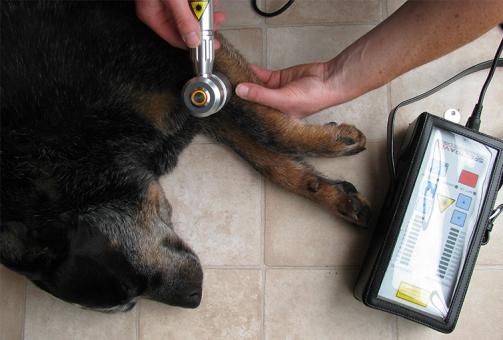
Laser therapy is referred to as LLLT (Low Level Laser Therapy). Low level lasers have been used worldwide for over 30 years. Studies have shown that the laser light, emitted from a cluster or a single probe, penetrates tissue and stimulates the natural healing process within the tissues.
When the energy from the beam of light travels into tissues, it stimulates the metabolism and production of collagen (which is the main protein of skin, bone, cartilage, connective tissue and tendon) and thus stimulates the rate of repair and remodelling of damaged tissues. The main effects of LLLT in living tissue are photochemical, like photosynthesis in plants, although other mechanisms are also involved.
Laser light stimulates:
- increased ATP activation (speeds up cellular process and healing)
- increased number of endothelial cells (wound healing)
- activation of macrophages (fights infection)
- enhanced endorphin production (pain relief)
- reduces inflammation by as much as 75%
- decrease swelling by stimulating lymphatic drainage
- speeds up nerve regeneration
- increased serotonin levels
- relax muscles and muscle spasm
- enhance the immune system
LLLT is popularly used for wound management (open wounds, ulcers, pressure sores and galls), Soft tissue injuries (strains, sprains, tendon/ligament/muscle injuries, haematomas), Joint conditions (capulitis, bursitis), Arthritis (OA and RA), chronic pain reduction and management, myofascial trigger point therapy, dermatological (skin) conditions, acupuncture and reduction of inflammation.
Note: Tara performs Laser Therapy for all animals and people for a wide range of conditions.
Lasers have an antibacterial effect, which makes them especially suitable for treating open wounds. In treatment of sports injuries, laser therapy offers fast and safe rehabilitation and a shortened recovery time. It should be used as soon as possible after injury- ideally within hours, as much quicker results will be achieved. Also if treatment is started within 24 hours, ‘proud flesh’ does not usually occur and secondary infection is controlled.
Wounds often heal without scarring and have normal hair growth. As with all aspects of horse management, best results are achieved by ‘little and often’ treatments.

